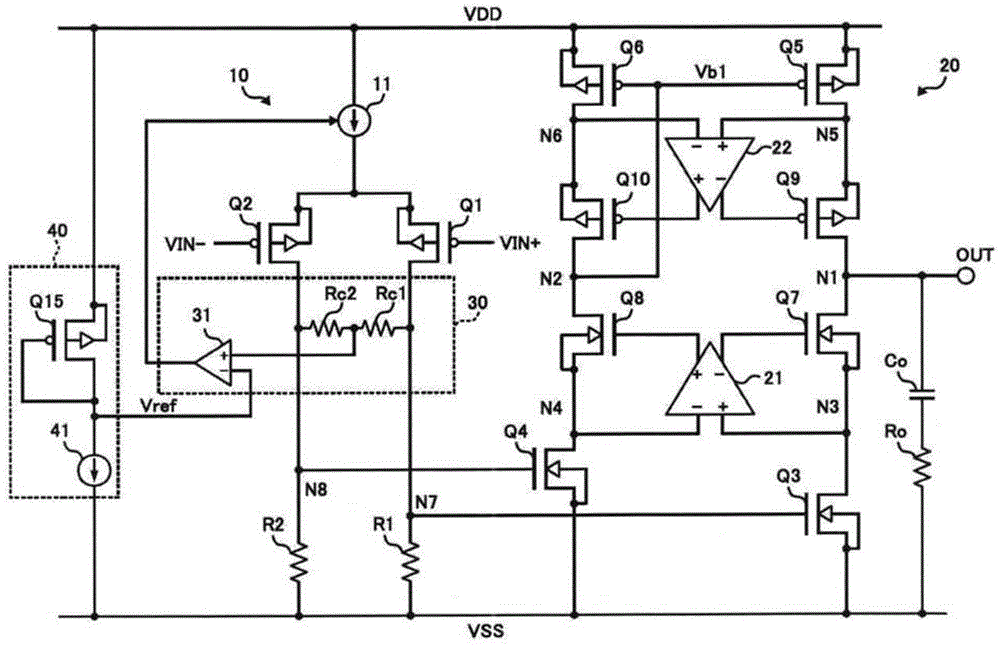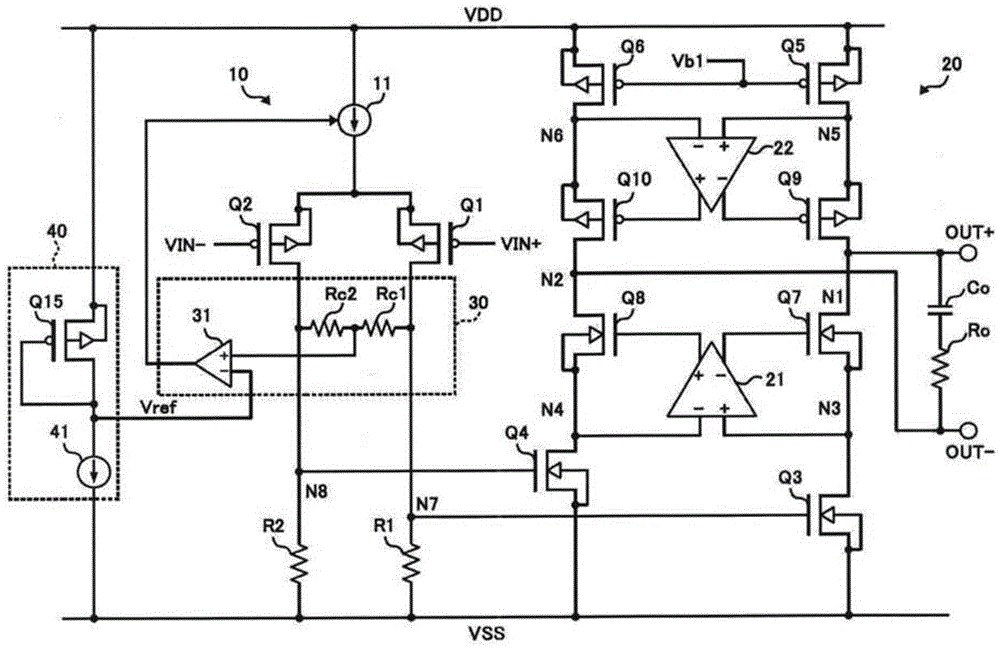Amplification circuit
A technology of amplifying circuit and amplifying stage, which is applied in the direction of differential amplifier, DC coupled DC amplifier, etc., can solve the problems of slow response, high-frequency expansion of difficult frequency band, gain reduction, etc., and achieve the effect of high-speed operation
- Summary
- Abstract
- Description
- Claims
- Application Information
AI Technical Summary
Problems solved by technology
Method used
Image
Examples
Embodiment Construction
[0032] figure 1 It is a figure which shows an example of the structure of the amplifier circuit which concerns on embodiment of this invention.
[0033] figure 1 The illustrated amplifier circuit has a first amplifier stage 10, a second amplifier stage 20, a common mode feedback unit 30, a reference voltage generator 40, an output capacitor Co, and an output resistor Ro.
[0034] The first amplifier stage 10 is a circuit that amplifies the input differential signal (VIN+, VIN-). figure 1 In the example shown in FIG. 1 , there are a pair of first transistor Q1 and second transistor Q2 constituting a differential pair, a constant current source 11, and resistors R1 and R2. The first transistor Q1 and the second transistor Q2 are P-type MOS transistors.
[0035] One of the differential signals (input signal VIN+) is input to the gate of the first transistor Q1, and the other of the differential signals (input signal VIN−) is input to the gate of the second transistor Q2.
...
PUM
 Login to View More
Login to View More Abstract
Description
Claims
Application Information
 Login to View More
Login to View More - R&D
- Intellectual Property
- Life Sciences
- Materials
- Tech Scout
- Unparalleled Data Quality
- Higher Quality Content
- 60% Fewer Hallucinations
Browse by: Latest US Patents, China's latest patents, Technical Efficacy Thesaurus, Application Domain, Technology Topic, Popular Technical Reports.
© 2025 PatSnap. All rights reserved.Legal|Privacy policy|Modern Slavery Act Transparency Statement|Sitemap|About US| Contact US: help@patsnap.com



